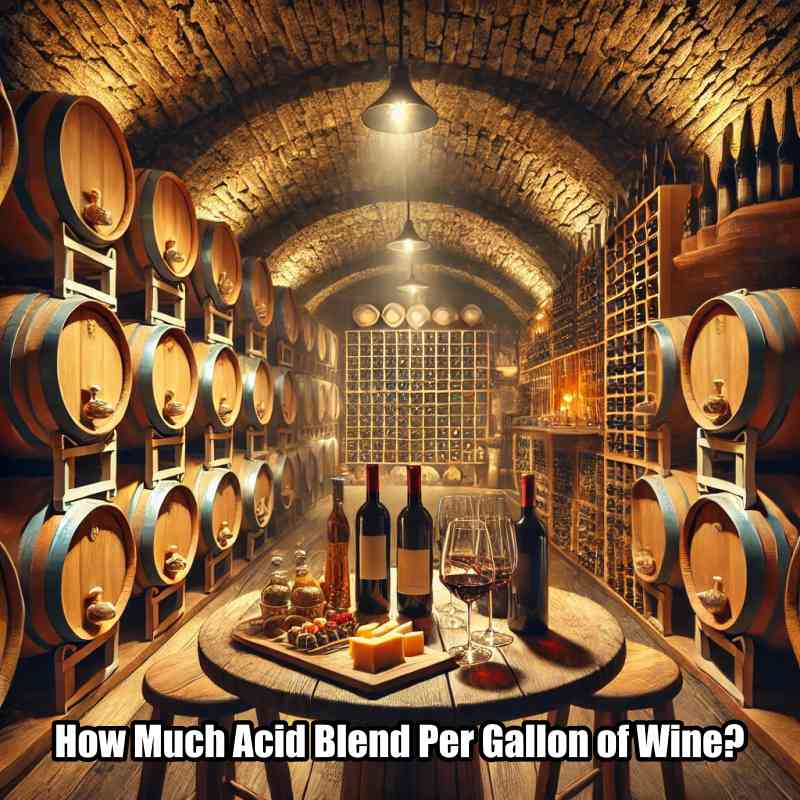Winemaking is both an art and a science, and one crucial aspect of the process is managing the wine’s acidity.
In this post, we’ll dive into the specifics of using an acid blend in your winemaking process to ensure your wine has the perfect balance of flavors.
Understanding how much acid blend per gallon of wine to add is essential for creating a high-quality product.
Whether you’re a seasoned winemaker or just starting, understanding how much acid blend to add per gallon of wine is essential for creating a high-quality product.
What is Acid Blend?
An acid blend typically consists of a combination of citric acid, tartaric acid, and malic acid. These acids are naturally found in grapes and play a vital role in the flavor profile and stability of the wine. The blend is used to adjust the acidity of the wine must, ensuring that the final product has the right balance of sweetness and tartness.
Why Acid Balance Matters in Wine
Acidity is one of the key components that affect the taste and preservation of wine.
It influences the wine’s crispness and freshness and helps prevent spoilage by creating an inhospitable environment for unwanted bacteria.
Proper acidity levels also enhance the wine’s ability to age gracefully.
How Much Acid Blend Per Gallon of Wine?
When adding acid blend to wine, start with 1 teaspoon per gallon of must. This is a general guideline, as the exact amount depends on the grape variety and initial acidity.
Measure your must’s pH and titratable acidity first, aiming for a pH between 3.2 and 3.6 and a TA of 0.6% to 0.8%. Adjust in small increments, dissolve thoroughly, and recheck the acidity to ensure a balanced flavor.
Steps to Add Acid Blend to Your Wine
- Measure the Initial Acidity: Use a pH meter and TA kit to determine the current acidity levels of your must.
- Calculate the Required Acid Blend: Based on your measurements, calculate the amount of acid blend needed. Start with small adjustments.
- Dissolve the Acid Blend: Mix the calculated amount of acid blend in a small amount of must or water until fully dissolved.
- Add to the Must: Gradually add the dissolved acid blend to your wine must, stirring thoroughly.
- Recheck the Acidity: After a few hours, measure the pH and TA again to ensure the levels are within the desired range.
Common Mistakes and How to Avoid Them
- Over-acidification: Adding too much acid blend can make the wine overly tart. Always start with small amounts and remeasure the acidity.
- Not Dissolving Properly: Ensure the acid blend is fully dissolved before adding it to the must to avoid uneven distribution.
- Ignoring Initial Acidity: Always measure the initial acidity of your must instead of assuming standard adjustments.
FAQ
What is the purpose of adding an acid blend to wine?
The acid blend helps achieve the desired acidity balance, enhancing flavor and stability.
Can I add the acid blend at any stage of winemaking?
It’s best to add it during the initial stages, but adjustments can be made during fermentation if necessary.
How do I know if my wine needs more acid?
Use a pH meter and TA kit to measure the acidity levels and adjust accordingly.
What happens if I add too much acid blend?
Over-acidification can make the wine overly tart. You may need to neutralize it with potassium bicarbonate or blend it with a less acidic wine.
Is it necessary to use an acid blend for all types of wine?
Not always. Some wines naturally have the right acidity levels, but it can be essential for those that don’t.
Conclusion
Balancing acidity is crucial in winemaking for flavor and stability. Start with 1 teaspoon of acid blend per gallon, adjusting based on initial pH and TA measurements.
Properly dissolve and mix the acid blend, rechecking acidity to ensure precision. Avoid common mistakes like over-acidification by making small adjustments.
By understanding and managing acidity, you can enhance your wine’s quality and achieve a perfectly balanced final product. Happy winemaking!


